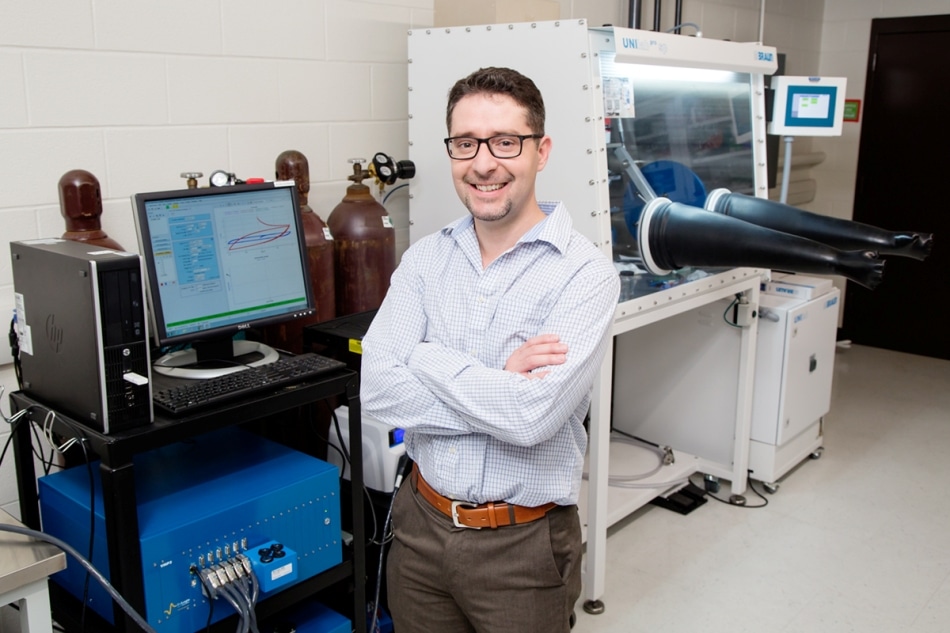Oct 13 2017
University of Illinois Engineers have reached one step closer to formulating a saltwater desalination technique, which is prospectively less expensive when compared to reverse osmosis and is dependent on battery technology.
As part of the research, the Scientists have concentrated on innovative materials with the ability to render desalination of brackish waters economically advantageous and energy saving.
 Illinois mechanical science and engineering professor Kyle Smith and his co-authors have shown that a new batterylike water desalination device could help provide fresh water to a variety of regions efficiently and economically. CREDIT: L. Brian Stauffer.
Illinois mechanical science and engineering professor Kyle Smith and his co-authors have shown that a new batterylike water desalination device could help provide fresh water to a variety of regions efficiently and economically. CREDIT: L. Brian Stauffer.
The need for practical desalinization technology is rising in the context of global climate change. Coastal regions — in which the increase in seawater levels can intrude and pollute groundwater aquifers — are one such area to be dealt with. According to the Researchers, the ever-increasing requirement for clean water sources, which have been declining steadily, has culminated in the increasing necessity for the desalination of low-salinity, brackish water from industrial and inland sources.
Kyle Smith, Professor of Mechanical Science and Engineering at the University of Illinois, and his colleagues have reported a research indicating the feasibility of this battery-like technology in the Electrochimica Acta journal.
In an earlier work, Smith and his colleagues applied theoretical modeling to demonstrate that the technology adopted in sodium-ion batteries might enable effective desalination of seawater. According to their theory, when electrodes comprising of chloride and sodium ions are used, salt is extracted out and stored in a chamber isolated from the purified water.
In our new study, we constructed and experimented with a batterylike device that uses electrodes made from a different material. That material can remove from brackish water not only sodium ions but also potassium, calcium, magnesium and others. This is important because salt and brackish waters do not contain just sodium chloride. It is often in a mix with other salts like potassium, calcium and manganese chloride.
Kyle Smith, Professor of Mechanical Science and Engineering, the University of Illinois
The innovative material used is a chemical equivalent of Prussian blue—the strong pigment used in ink for blueprints. According to Smith, the material draws and holds positively charged ions such as sodium ions inside its crystal structure.
“The competition between the rate of diffusion of the positively charged ion within the crystal structure and the volume at which the ions can be stored creates a traplike structure,” stated Smith. “They go in easily but can’t get out.”
Although other materials with the ability to isolate positive ions exist, the Prussian blue equivalent has an added advantage that it is very inexpensive to obtain.
To make a technology like this be economically feasible, it needs to be cheap and, ideally, have some value-added benefit. By showing that our device works well with lower-salinity waters, the door for use with inland brackish waters and possibly industrial wastewater has opened.
Kyle Smith, Professor of Mechanical Science and Engineering, the University of Illinois
Smith and his team have demonstrated that the amount of salt isolated from seawater is adequate to validate their technique with brackish water. Yet, more investigation is needed to ascertain the effect of isolation of salts from seawater with higher salinity and also wastewater on energy efficiency.
This study was supported by University of Illinois Department of Mechanical Science and Engineering, the University of Illinois College of Engineering and Wetsus European Center of Excellence for Sustainable Water Technology.